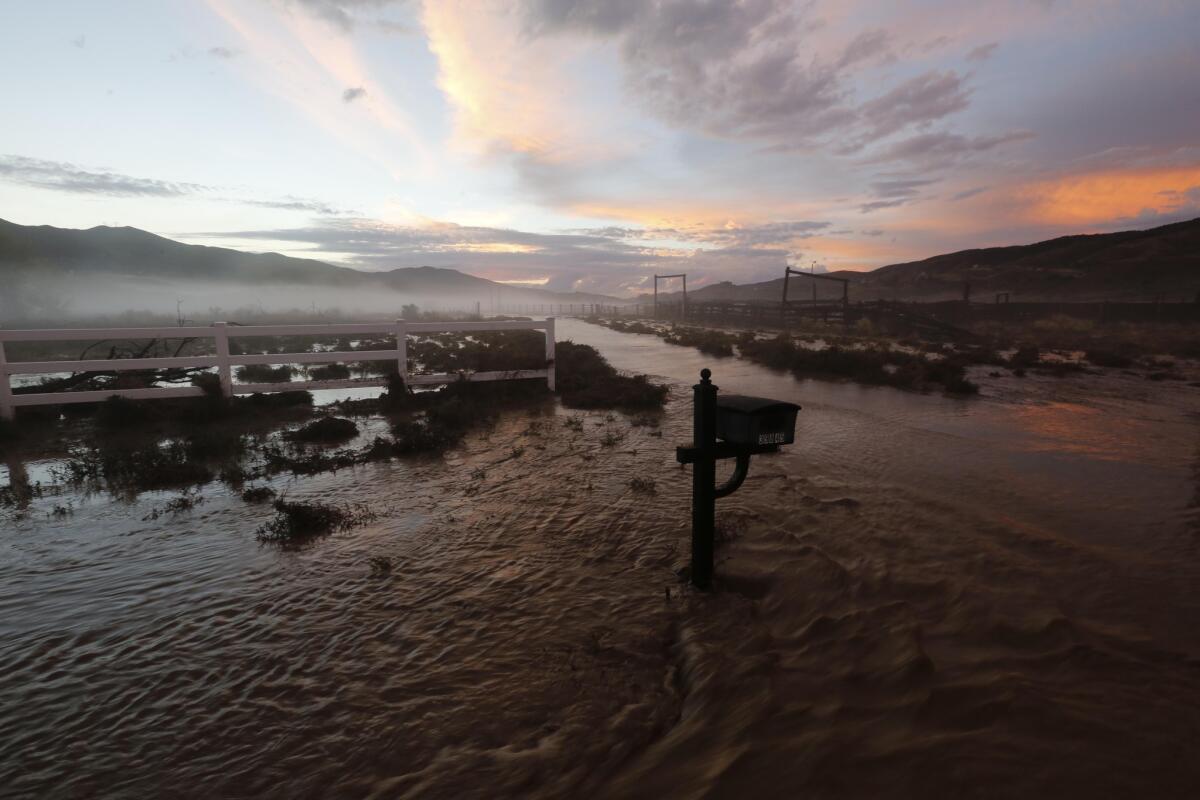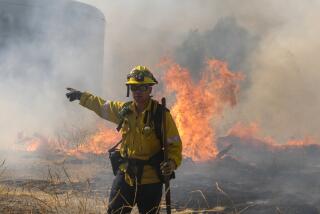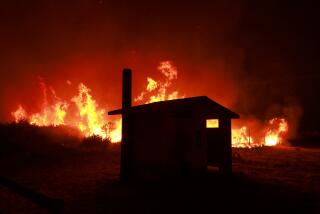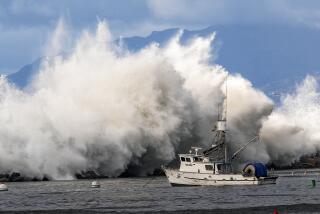FEMA urges Californians to buy flood insurance before El Niño

Recent flash flooding in the Antelope Valley highlights the need for Californians to purchase flood insurance in preparation for a strong El Nino this winter, according to FEMA officials.
With drenching El Niño rains anticipated to begin more than a month from now, the Federal Emergency Management Agency is urging Californians to buy flood insurance, even if they live in areas of low to moderate risk.
“If there was ever a time to buy flood insurance, this is the time,” said Roy Wright, FEMA’s deputy associate administrator for insurance and mitigation.
“You cannot get it at the last minute. There’s a 30-day wait period for new flood insurance policies to go into effect,” Wright told reporters at a Friday press conference.
------------
FOR THE RECORD:
Flood insurance: In the Oct. 25 California section, an article about FEMA officials urging Californians to purchase flood insurance said that recent flooding had closed the 57 Freeway. Mudflows closed the 58 Freeway. —
------------
Traditionally, only one-third to one-half of U.S. residents who live in flood risk areas are covered by flood insurance, according to Wright. Most standard homeowner policies do not cover flood damage.
Californians can obtain information on flood insurance, as well as rate their flood risk, by going to the website FloodSmart.gov.
Earlier this month, Antelope Valley and Lake Hughes residents got a foretaste of the potential havoc El Niño could wreak this winter when heavy rains caused mudslides to bury cars and trucks along Interstate 5 and the 58 Freeway.
Although the downpour was unrelated to El Niño, it demonstrated how four years of drought and widespread wildfires had impaired the land’s ability to absorb large amounts of rainfall. Unable to percolate into the soil, the rain raced over the earth, picking up loose soil as it moved to lower elevations.
“It’s almost like asphalt,” Wright said of parched and fire-scarred earth. “When rain hits, it just conveys straight down very quickly.” (To view a graphic on how debris flows occur, click here.)
It would be “at least a month if not longer” before typical El Niño rains begin to affect the West Coast, according to Mike Halpert, deputy director of the National Oceanic and Atmospheric Assn.’s climate prediction center.
Halpert said that forecasters believe that above-average precipitation will “get up into the northern part of California” as well as Central and Southern California.
In addition to purchasing flood insurance, Wright said that residents should devise their own emergency response plans. The website Ready.gov provides information on what kinds of preparations people should make.
FEMA flood insurance facts:
- Just a few inches of water from a flood can cause tens of thousands of dollars in damage. From 2010 to 2014 the average residential flood claim amounted to more than $39,000. In 2014, the average flood insurance policy premium was about $700 per year.
- Flood insurance is available to homeowners, renters, condo owners/renters, and commercial owners/renters. Costs vary depending on how much insurance is purchased, what it covers and the property’s flood risk.
- All policy forms provide coverage for buildings and contents. However, you might want to discuss insuring personal property with your agent, since contents coverage is optional. Typically, there’s a 30-day waiting period from date of purchase before your policy goes into effect. That means now is the best time to buy flood insurance
- Since standard homeowners insurance doesn’t cover flooding, it’s important to have protection from the floods associated with hurricanes, tropical storms, heavy rains and other conditions that impact the U.S.
- In 1968, Congress created the National Flood Insurance Program (NFIP) to help provide a means for property owners to financially protect themselves. The NFIP offers flood insurance to homeowners, renters and business owners if their community participates in the NFIP. Participating communities agree to adopt and enforce ordinances that meet or exceed FEMA requirements to reduce the risk of flooding.
Follow: @montemorin
MORE ON EL NINO:
As El Niño approaches, first responders undergo swift-water rescue training
El Niño keeps getting stronger, raises chance of drenching rains
Massive El Niño is now ‘too big to fail,’ scientist says







